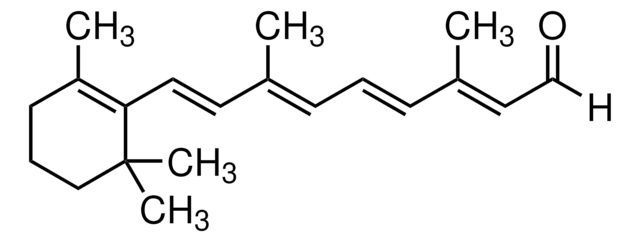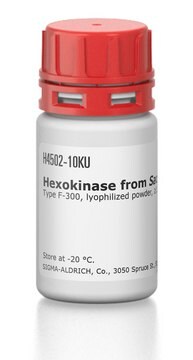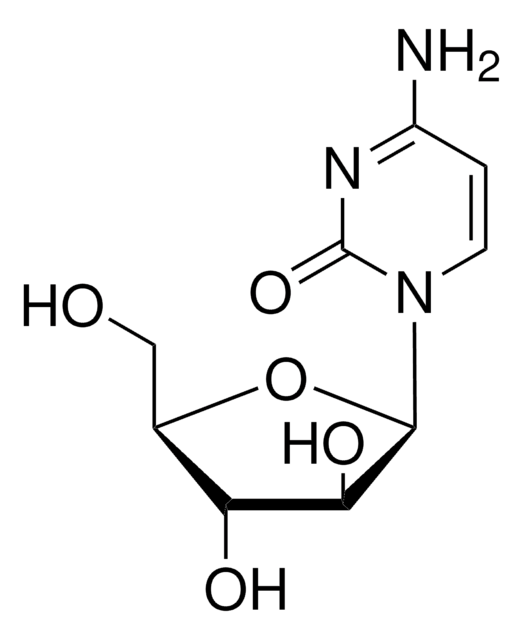H7779
Retinoic acid p-hydroxyanilide
≥95%
Sinonimo/i:
4-HPR, Fenretinide, N-(4-Hydroxyphenyl)retinamide
About This Item
Prodotti consigliati
Origine biologica
synthetic (organic)
Saggio
≥95%
Forma fisica
powder
Colore
yellow to yellow-orange
Temperatura di conservazione
−20°C
Stringa SMILE
CC1=C(\C=C\C(C)=C\C=C\C(C)=C\C(=O)Nc2ccc(O)cc2)C(C)(C)CCC1
InChI
1S/C26H33NO2/c1-19(11-16-24-21(3)10-7-17-26(24,4)5)8-6-9-20(2)18-25(29)27-22-12-14-23(28)15-13-22/h6,8-9,11-16,18,28H,7,10,17H2,1-5H3,(H,27,29)/b9-6+,16-11+,19-8+,20-18+
AKJHMTWEGVYYSE-FXILSDISSA-N
Descrizione generale
Applicazioni
- as a synthetic retinoid to induce apoptosis in SEB-1 sebocytes
- as a medium supplement for C2C12 myoblasts to test its effect on ceramide formation
- to test in cytotoxicity in T-cell acute lymphoblastic leukemia (T-ALL)
Azioni biochim/fisiol
Avvertenze
Danger
Indicazioni di pericolo
Classi di pericolo
Acute Tox. 4 Dermal - Acute Tox. 4 Inhalation - Acute Tox. 4 Oral - Eye Irrit. 2 - Repr. 1B - Skin Irrit. 2 - STOT SE 3
Organi bersaglio
Respiratory system
Codice della classe di stoccaggio
6.1C - Combustible acute toxic Cat.3 / toxic compounds or compounds which causing chronic effects
Classe di pericolosità dell'acqua (WGK)
WGK 3
Punto d’infiammabilità (°F)
Not applicable
Punto d’infiammabilità (°C)
Not applicable
Dispositivi di protezione individuale
Eyeshields, Gloves, type P3 (EN 143) respirator cartridges
Certificati d'analisi (COA)
Cerca il Certificati d'analisi (COA) digitando il numero di lotto/batch corrispondente. I numeri di lotto o di batch sono stampati sull'etichetta dei prodotti dopo la parola ‘Lotto’ o ‘Batch’.
Possiedi già questo prodotto?
I documenti relativi ai prodotti acquistati recentemente sono disponibili nell’Archivio dei documenti.
I clienti hanno visto anche
Articoli
All-trans retinoic acid (RA, ATRA) is a pleiotropic activation factor that regulates genes associated with normal vertebrate cellular processes such as cell differentiation, cell proliferation, apoptosis, and embryonic development.
Il team dei nostri ricercatori vanta grande esperienza in tutte le aree della ricerca quali Life Science, scienza dei materiali, sintesi chimica, cromatografia, discipline analitiche, ecc..
Contatta l'Assistenza Tecnica.










